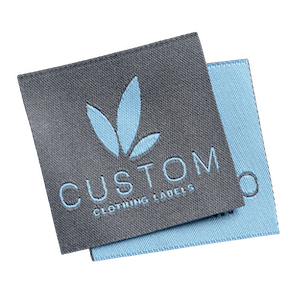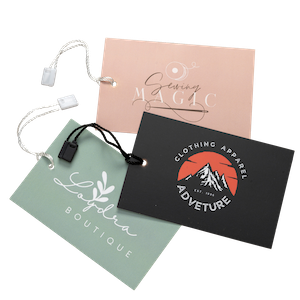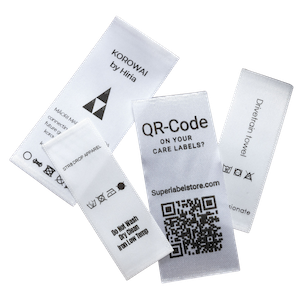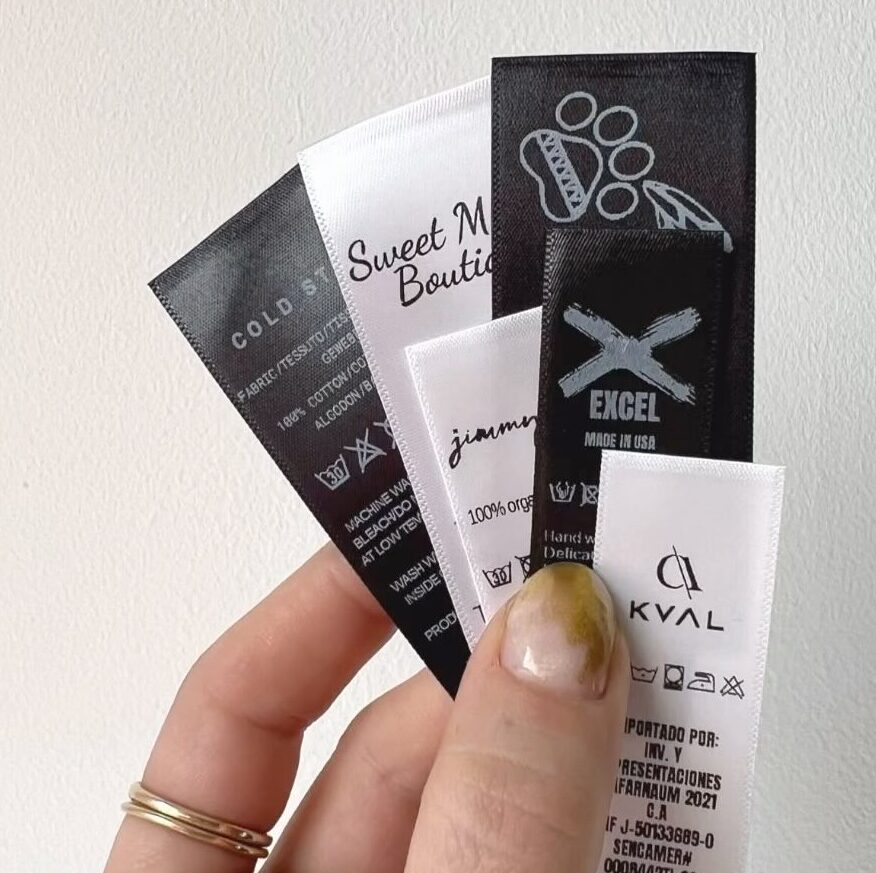Trusted by












At Super Label Store, we offer high-quality custom care labels that not only provide vital laundry instructions but also reinforce your brand identity. Our custom washing labels and laundry care labels are designed for clarity, durability, and style. These labels ensure that your garments are maintained according to precise care guidelines while adding a sophisticated finishing touch. Ideal for designers and clothing manufacturers, our labels serve as a mark of quality and professionalism. Discover how our custom care labels and laundry tags can enhance customer satisfaction and elevate your apparel’s longevity.
Boost your brand’s credibility with our custom care labels for clothing. Our labels help customers understand proper garment care, ensuring your clothing remains vibrant and durable. Whether you need custom washing labels, laundry care labels, or simple laundry labels and tags, our products add a professional touch to every item. Experience the power of effective laundry labelling that enhances your brand image and supports quality standards in the apparel industry.
Our online design tool makes creating custom care labels quick and straightforward. We empower you to customize every detail so that your labels perfectly reflect your brand’s style.
Intuitive Online Designer – Our easy-to-use online platform lets you upload logos, choose fonts, and select colors. Preview your design in real time and make adjustments until it meets your exact specifications.
Tailored to Your Brand – Customize every aspect of your care labels—from the text detailing washing instructions to the overall design layout. This personalization ensures that your labels integrate seamlessly with your garment’s design and your brand’s identity.
Quick Turnaround Times – Once you finalize your design, our efficient production process ensures a fast turnaround. Enjoy reliable delivery of your custom care labels without compromising on quality.
Expert Support – Our design team is always available to provide guidance. Whether you need advice on layout or material selection, our experts help ensure your custom care labels are perfect for your needs.
Easy to use configurators help you to design and order in minutes.
Premium quality from start to finish.
FROM 5 TO 10.000+ PIECES
Fast production time.
6-12 business days or less
DOWNLOAD AND PRINT YOUR PROOF (PDF) BEFORE ORDERING, SCALE 1:1.





Custom care labels are essential for every segment of the apparel industry. They serve practical and branding purposes, making them a must-have for diverse applications.
For high-end and mass-market clothing, custom care labels guarantee that customers receive the proper washing instructions. They add a touch of professionalism that reflects the quality of your brand.
Ensure that your sports and activewear garments are maintained correctly. Our durable laundry care labels resist wear and tear, even in the most demanding conditions, helping preserve the performance and appearance of your activewear.
Parents rely on clear care instructions to protect delicate fabrics. Our custom washing labels are designed to withstand frequent laundering, ensuring children’s clothing stays vibrant and intact.
For luxury brands, every detail matters. Our elegant care labels not only provide essential care instructions but also reinforce the premium image of your apparel. Custom care labels add a refined finishing touch that communicates quality and exclusivity.
Ensure that workwear and uniforms are maintained according to strict guidelines. Our laundry labels help communicate important care instructions that prolong the life of your garments and meet safety standards.
Custom care labels do more than just guide washing instructions—they play a vital role in building and maintaining your brand image.
Strengthening Brand Identity – Every garment that carries your custom care label reinforces your brand’s commitment to quality and detail. These labels become a subtle but effective component of your overall branding strategy.
Educating Your Customers – Well-designed care labels provide valuable information about how to care for your clothing. This education reduces wear and tear, ensuring that your products maintain their appearance and value over time.
Differentiating Your Products – In a crowded market, unique care labels can set your products apart. They signal that your brand pays attention to every detail, from design to post-purchase care, giving you an edge over competitors.
Boosting Loyalty and Trust – Customers trust brands that care about product longevity. When garments are maintained properly, customer satisfaction increases, which in turn boosts loyalty and positive word-of-mouth referrals.
We offer a comprehensive range of options for your laundry labelling needs. Choose the solution that best fits your product and brand style.
Our custom washing labels provide clear instructions on how to maintain your garments. They include symbols and text that communicate washing, drying, and ironing instructions clearly.
Designed to withstand repeated laundering, our laundry care labels ensure that essential care information remains legible and intact. They are ideal for high-use clothing such as activewear and uniforms.
Our laundry labels and tags offer versatile options for a range of applications. Whether you need simple labels or tags that also serve a decorative function, our products meet diverse needs.
Ordering your custom care labels from Super Label Store is straightforward and efficient. Our process is designed to provide you with a hassle-free experience.
Step 1: Design Your Label
Use our intuitive online design tool to create your custom care labels. Upload your logo, choose your colors, and select from various layout options to perfectly match your brand’s style.
Step 2: Select Your Options
Choose the type of care label you need, whether it’s a custom washing label, laundry care label, or another format. Customize the text and symbols to ensure compliance and clarity.
Step 3: Place Your Order
Finalize your design and place your order through our secure online system. We accept low minimum orders, making our solutions accessible for both startups and established brands.
Step 4: Fast Production & Delivery
Enjoy quick production times and prompt delivery. Our efficient process ensures that your custom care labels arrive on schedule, ready to enhance your garments.
Step 5: Apply & Impress
Affix your care labels to your garments and see the difference. Our durable labels not only guide proper washing but also boost the overall perception of your brand’s quality.
Care labels for clothing are tags that provide essential washing and maintenance instructions. They ensure that garments are cared for properly and comply with regulatory standards.
Use our online design tool to upload your logo, choose colors, and select text and symbols. Customize every detail to match your brand’s aesthetic and requirements.
We use premium, durable materials that withstand repeated washing. Our labels include options for woven, printed, and eco-friendly materials.
Yes, we offer low minimum orders. This makes our custom care labels accessible for small businesses and startups as well as larger brands.
Custom care labels enhance your brand’s image by providing clear, professional washing instructions. They also help extend the life of your garments, leading to increased customer satisfaction.
Our streamlined process ensures fast production and delivery. You can expect your custom care labels to arrive promptly without sacrificing quality.
At Super Label Store, we combine innovation, quality, and reliability to deliver custom care labels that truly enhance your apparel. Our expertise in crafting clear, durable, and stylish laundry care labels ensures that your garments remain in perfect condition while communicating your brand’s commitment to excellence. We understand that every detail matters—from the design of the label to the clarity of the washing instructions—and our products reflect this dedication to quality.
Invest in custom care labels that not only guide proper garment maintenance but also add a professional touch to your products. Our custom washing labels, laundry care labels, and laundry tags are designed to boost customer confidence and extend the life of your apparel. With every label, you deliver a promise of quality and reliability that builds lasting customer relationships.